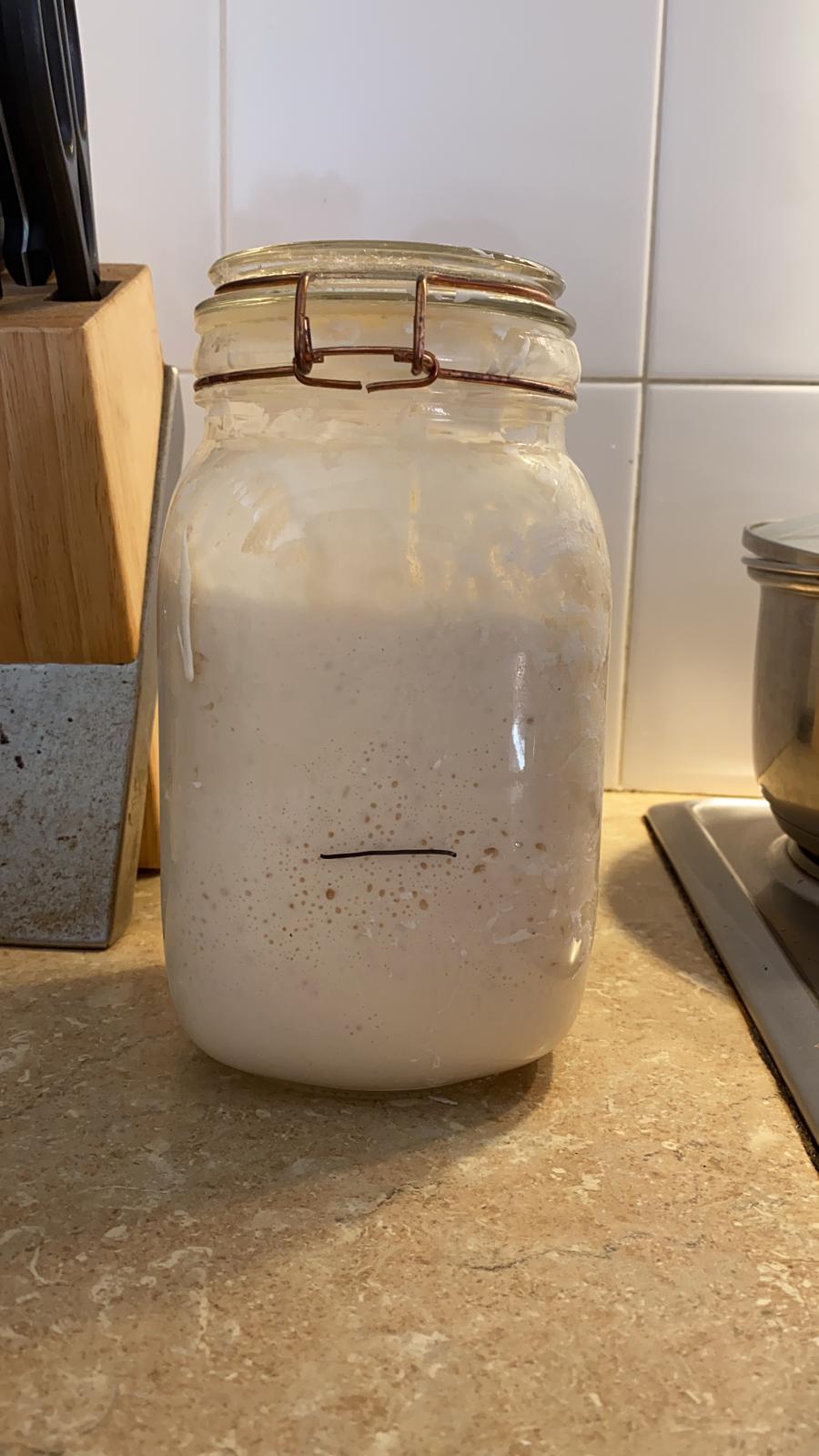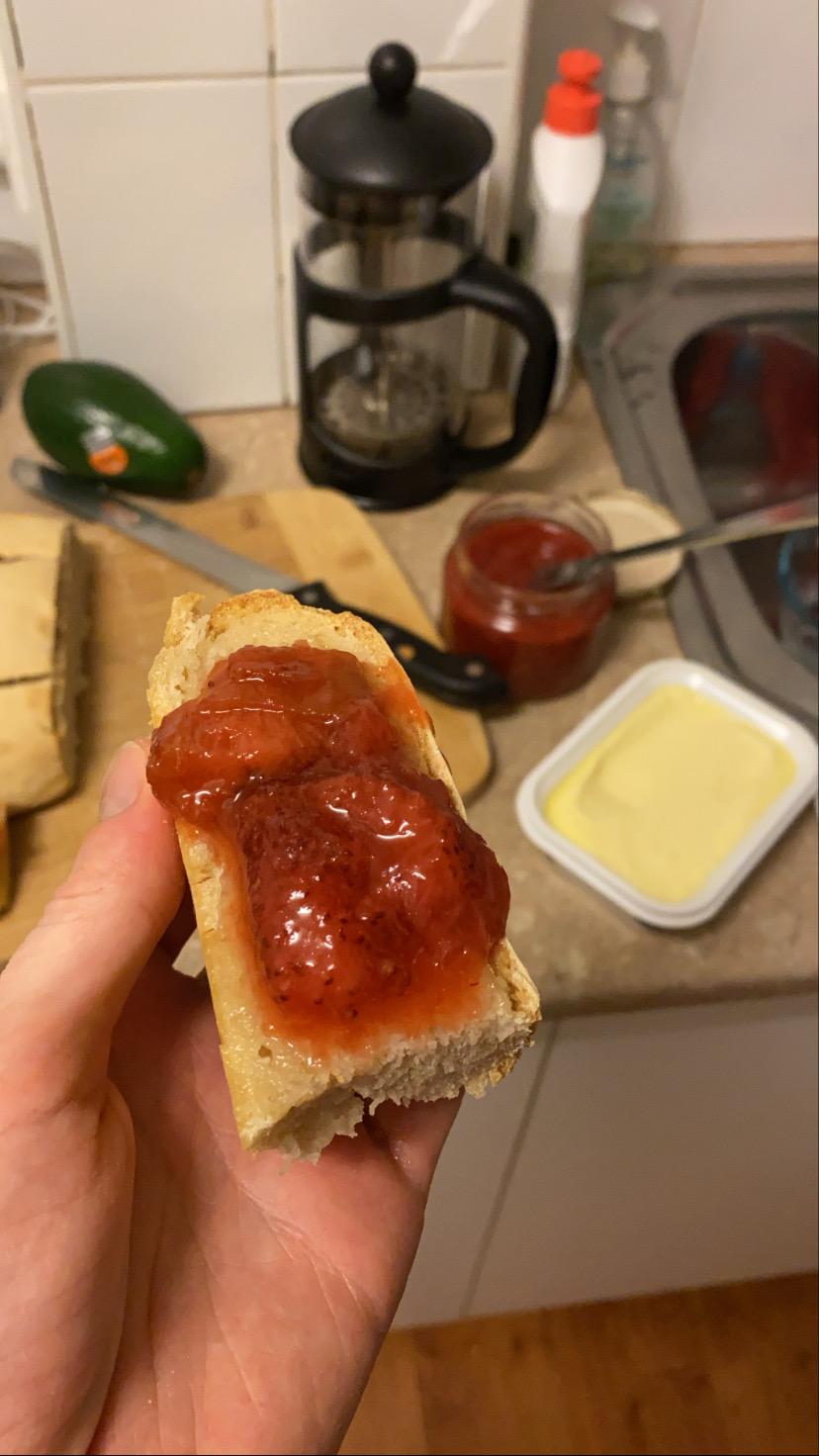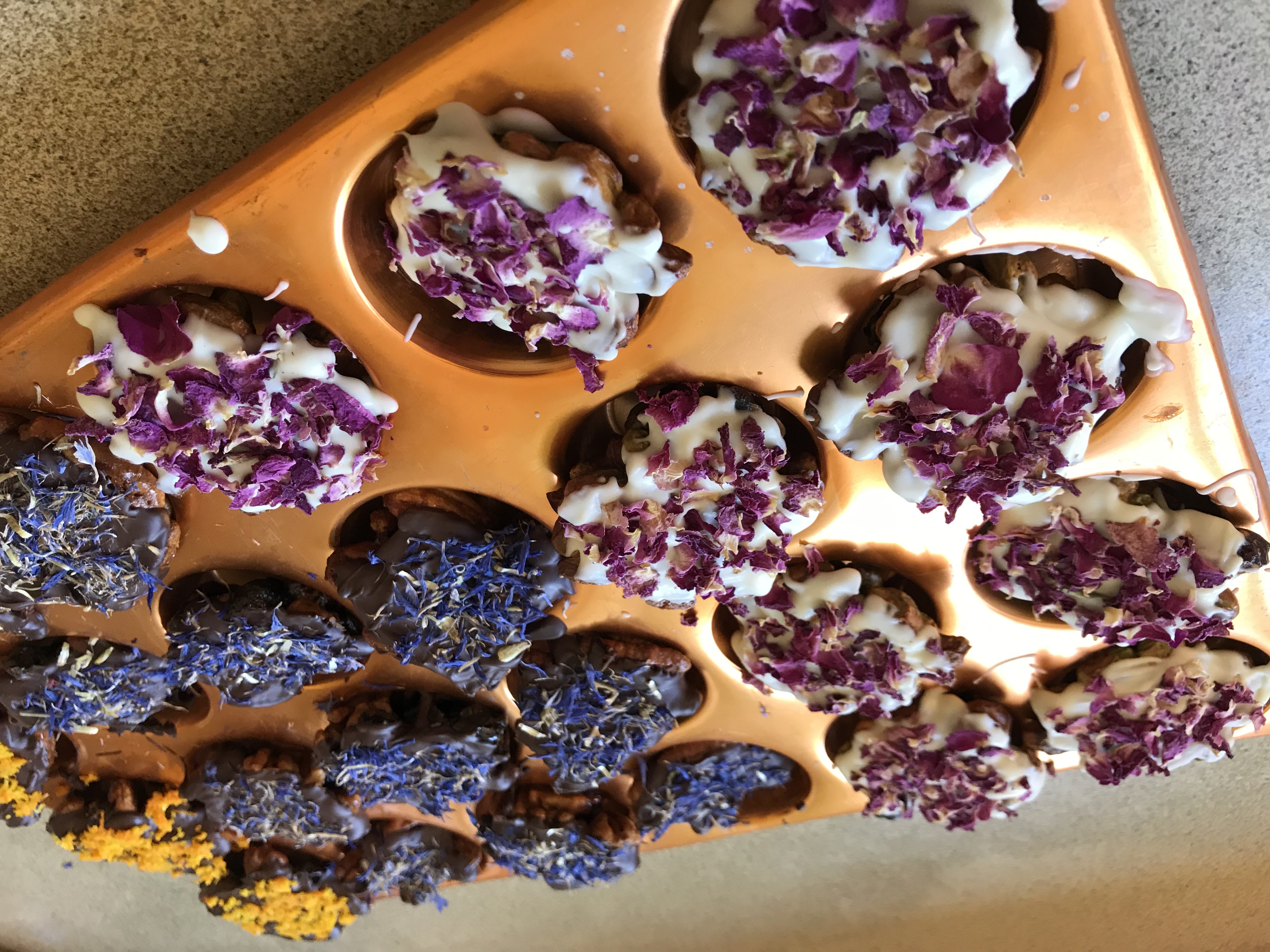Cook’s Institutes: Three Barristers’ Recipes For Enduring Lockdown

During the last few months, most barristers across Greater Sydney have found themselves working largely from ‘Home Chambers’. Suddenly relived of the daily commute (and, especially for those with a criminal practice, with many matters on hold), we have found ourselves with more time on our hands and a hunger for challenge and stimulation. And for many of us, those hands were soon filled with rolling pins, dough and lemon zest, and that hunger was soon sated with batch after batch of home-made pecan pie, infused liquor or rye flour sourdough, each iteration a careful refinement of the last, like revision after revision of appellate submissions as the hour creeps closer to 16:00.
More than just a way to fill extra time, for some it became a means of measuring time in the long hours of life at home, for others a way to compensate for international travel plans delayed for 18 months, and for others even a way of ‘cultivating their solicitors’ in online pizza-making classes!
Here, three barristers who have tried their hand in the kitchen during lockdown explain what motivated them, what recipes they worked on, and how it fitted in with life in lockdown.
Kieran Fitzgerald, Wardell Chambers, on Sourdough and Limoncello:

'I have always enjoyed cooking, but didn’t really do much of it until the pandemic hit. This was partly because I live by myself, so if I decided to bake a cake or something similar, I would end up eating the entire cake for dinner which isn’t ideal. With all the extra free time and limited other options of things to do during lockdown, I set out on trying some new things that I hadn’t made before. Two of these were sourdough bread and the Italian liqueur, limoncello.
'The first thing to know about sourdough is that it is time-consuming. Before you can bake a loaf, you need to make a sourdough starter which takes about a week. You then need to keep feeding the starter to keep it alive, which needs to be done daily. It is akin to having a really bad pet – very demanding and gives you nothing in return [So, a cat? – DJT]. However, when you wake up one morning and your starter has roared to life and overflowed from its jar, your heart will soar. When your starter is ready, a loaf from start to finish (taking it out of the oven) takes at least one whole day but for best results, longer than that. There is a lot of waiting and resting the dough, but the beautiful silkiness and elasticity of the dough is its own delight, not to mention the satisfaction from achieving the perfect crumb and crusty exterior.
'Working from home is ideal for making sourdough, as it’s easy enough to have it on the bench and you can get up to tend to it as needed. Making a loaf of bread using yeast is significantly easier and quicker, but the crumb and the flavour just aren’t the same. Also, at the start of lockdown, yeast was a scarce commodity.
'By comparison, limoncello is easy to make. You just put lemon peel in a jar with vodka and then leave it for a month, then strain and add sugar syrup to it. I only made one batch and probably put a little too much sugar syrup in it, but it worked anyway. One conundrum limoncello throws up is that you only use the lemon peel, so you end up with a bunch of peeled lemons which you need to use up pretty quickly, but you can always squeeze them and freeze the juice for later.
'Limoncello makes a good spritz, mixed with either soda water or sparkling wine. You can throw a shot of gin in there (I recommend one with citrus botanicals such as Bombay Sapphire) but remember: the limoncello is quite strong, so if you freepour limoncello and gin into a glass before adding soda water, after a couple of those you may find your Zoom catch ups with friends are a lot more fun, or that you need a lie down. People will also be impressed if you whip it out when they visit and tell them that you made it yourself.'
Recipe Ingredients and Method:
There are many recipes out there for both of these. For sourdough, see www.sbs.com.au/food/recipes/basic-sourdough-bread. For limoncello, see www.thekitchn.com/how-to-make-limoncello-cooking-lessons-from-the-kitchn-197694.
Talitha Fishburn, Black Chambers, on Toasts au Fromage:

'Just days prior to lockdown, my olfactory senses were piqued by delicious aromas wafting from Penny’s Cheese Shop in Potts Point. The culprit: cheese toasties made by a local fromage virtuoso. I stood in line (when lines were still ok) behind a chap whose day was made as mine was broken; he purchased cheese toastie #30 of the day’s 30. 'Next time', I thought…
'…As things transpired in Greater Sydney, 'next time' ended up being an impossibly long wait. By the following weekend, Penny’s Cheese Shop was forbidden territory.
'I tried to forget about the cheese toastie. I focussed on other things. I walked, I worked, I walked, I worked, I even tried my hand at online trivia. But memories of the cheese toastie intercepted my focus. May it 'cheese' Your Honour, I once nearly said during a telephone directions hearing. Then, to my horror, a cheese toastie flashed before my eyes on an episode of 'Plat du Tour' on Tour De France re-runs. 'That’s it', I thought. Masked like a bandit, I left the house for some essential shopping: bread, butter, cheese.

'Back home. The first effort. Disaster. My hasty choice of brown bread and my foolishly health-conscious minute smears of butter produced a smouldering dud. The coal-encased bubbling cheese lava did not even warrant being plated, let alone nibbled at. I was fully cheesed off. More research was required. Maybe even some cheese devilling. According to my outsourced toastie gurus, it is all about the type of bread: it has to be soy linseed infused sourdough. The oil composition is 'just right'. And another tip: ensure a thickish spread of salted butter.
'Eventually, after some trial and error and a few more essential shopping trips, I developed a prototype of a cheese toastie that is delectable – especially when one is starving for gourmet offerings due to city-wide lockdowns.
'The key to the toastie is using quite a few cheese varieties. If you are greedy, try up to five (5). Essential types are Gruyère and Raclette. Then, try some sharp Cheddar and stringy Mozzarella. If you can get your hands on some Fontina or Challerhocker that will enhance things too.'
David J. Townsend, 3rd Floor Wentworth Chambers on Floral Florentines
'In that brief, gilded age between the 2020 lockdown and the 2021 lockdown, I managed to make a trip outside Greater Sydney to visit my family farm on the north coast of NSW. It was fortunate that it was in Autumn (specifically, the southern hemisphere’s Vendémiaire), and just the right time for hand-harvesting some pecan nuts growing on the property.
'Having returned with my checked luggage on the aeroplane – if you can remember what one of those is – chock-full of ripe pecans, I now found myself in the classic farmer’s dilemma: what to do with a bumper harvest of just one crop? The answer, of course, was what farmers have been doing for generations: make it into lots of sweet treats and give it to the neighbours.
'So, taking my inspiration from the culinary legends of the Country Women’s Association – a group for which I am, sadly, doubly ineligible – I did what every barrister does when confronted with a new practice area: I sat down and did hours of research on the culinary history of the pecan. You’ll be disappointed to hear that the great monograph on the sociological and legal history of pecans has yet to be written, but if we go into another lockdown I might at least have identified a unique pitch idea for Thomson Reuters.
'I determined to make florentines. But should I toast the pecans first, should I add candied peel or sour cherry, how much maple syrup should I add, and what type of chocolate should I use to make the base? In the spirit of UCPR Sch 7 cl 3(g), it was time to perform some 'examinations, tests or other investigations'. Like every brave scientist, I experimented first on myself. Then, like every highly-unethical scientist, I experimented on my family. I made several iterations with slight variations of ingredients and cooking time and gifted them to family members on condition that they consume the variations (identified by number only) and then fill in a ‘Tasting Card’ wherein each numbered variety was ranked according to a matrix of criteria relating to taste, aroma, texture and presentation. (It is possible that I may have over-intellectualised the process.)
'The joy of all of this, though, was discovering that there are many different ways to make a nice florentine, but there’s really only one way to enjoy the end result: sharing it with someone else. I’ve had a lot of barristers, solicitors – and even persons not appearing on the roll kept by the prothonotary of the Supreme Court – to say ‘Thankyou’ to over the last year, and gifting them some of these floral florentines has been a fun way to do it!'
By the time this edition reaches you, NSW should be well out of lockdown and looking forward to a long summer of physical embraces, interstate travel and supermarket shelves amply stocked with toilet paper. But if you’ve got a bit of time over the Court vacation, or you need to keep the kids busy for a couple of hours, why not have a go at replicating one of these recipes, and take something good out of lockdown? I’ll raise of glass of home-infused limoncello to that!
Sourdough Tips

- Use a 50/50 mix of rye flour and plain (wheat) flour for the starter, but if you can’t get rye flour, don’t worry about it. Be sure to buy baker’s flour as it is stronger due to the higher protein content and will make you a better starter.
- Use filtered water in your starter as tap water can inhibit the growth of bacteria that you need.
- Be patient.
- Be gentle – use light hands when you are handling the dough!
- Boil the kettle and put a cup of boiling water in a dish on the bottom of the oven when baking – the steam will help ensure a delicious thick crust.

Limoncello Tips
- Use a decent vodka as even the lemon and sugar syrup will not be able to hide the rocket fuel character of cheap spirits.
- Let it infuse for a month. The longer you leave it, the more lemon flavour it will have.
- Peeling the lemon and scraping off the white pith (which is bitter) is tedious and time consuming. I used a zester instead.
- When adding the sugar syrup, taste the mixture as you go to make sure you are getting the balance right.
Toasts au Fromage Recipe

Ingredients:
- Two (2) to five (5) varieties of cheese, as described below. This recipe is all about the quality and variety of the cheeses.
- Soy linseed sourdough bread
- Salted butter
- Cornichons, cocktails onions or gourmet mustards
Method: Spread butter over two slices of bread. Place on hot stove. Add layers of mixed cheese to top side of one slice. Wait a couple of minutes. Perhaps check LinkedIn while waiting [or read an article in Bar News – DJT]. Then, join slices (place the slice without the cheese bottom-side touching the cheese on the other slice to maximise heat retention) to make what is commonly known as a 'sandwich' formation. Keep it cooking gently until bread is golden brown (c.f. coal black) and cheese is warmed/melted.
Variations: One can get gastro-adventurous and #Instgrammable by exploring different types of condiments to add. For example, cornichon (mini gherkins), cocktail onions and types of mustard.
Serving Suggestion: Serve with a deliberately scant couple of mini-cornichon in typical French market style along with a side of Satie or Debussy that will persist well beyond the final bite. Bon appétit!
Floral Florentine Recipe

Ingredients:
- 250 g pecans. You can of course just purchase these from the store. However, if you are shelling your own pecans, this is a bit of a fiddly task. If you have children to look after (i.e. you are leading unlearnèd juniors), this is a good task to give to them.
- Condensed milk
- Orange blossom water
- Approx. 100 mL maple syrup. Get one of the late season grades if you can (e.g. Grade A Dark & Robust), as the flavour is stronger and better for cooking.
- Approx. 50 g dried sour cherries. You can get these at a whole foods store. Don’t get sweet cherries, you want a tart flavour to balance out the sweet ingredients.
- Vanilla essence
- 250 g dark cooking chocolate. Use cooking chocolate, the eating chocolate doesn’t set as well.
- Rose petals, cornflowers or some other such edible flowers
- Zest of one orange. Zest it just before you need to use it, to keep the zest zesty.
Method: For batch 1: Heat oven to 180˚C fan-forced/200˚C conventional. Roughly chop pecans (you can even just work with them whole, but it’s a bit more fiddly). Do the same to the sour cherries. In a small bowl, mix 100 g pecans, about a tablespoon of condensed milk, a dash of orange blossom water (not too much), about 25 g sour cherries, and a heavy dollop of vanilla essence. Spoon individual florentines onto a baking sheet lined with baking paper and cook for 12-15 minutes: watch them, and don’t let them burn on top. Remove, allow to cool, and then invert (perhaps into a muffin tray, as this makes the next step easier). Melt the chocolate in a double saucepan and brush onto the upturned bottoms of the florentines. Before the chocolate solidifies, sprinkle with orange zest. Allow to cool, invert again (so they are right-side up), and they are ready to eat.
For batch 2: Repeat the process above, but leaving out the orange blossom water, and sprinkling the chocolate bottoms with the flower petals instead of the zest. (After each batch is cooked separately, you could do the chocolate stage for both batches simultaneously.)
Tips: The key to the preparation is the consistency of the mixture. You’re only using the condensed milk to make things stick together, so only use as much as you need for that. On the other hand, the orange blossom water, maple syrup and vanilla essence will tend to decrease the viscosity of the condensed milk, so adjust these ingredients as necessary to get the pecans and cherries to stick to one another and hold their shape while they are cooking. The key to the presentation is in the edible flowers/citrus zest – especially if you’re giving these as a gift.
Variations: Try pistachios, rosewater and cranberries in place of pecans, orange blossom water and sour cherries. For Australian ingredients, try macadamias, red gum honey and dried Davidson plums in place of the pecans, maple syrup and sour cherries. Try white chocolate for the bottoms, paired with lemon or lime zest. Infinite diversity in infinite combinations!
.jpeg)